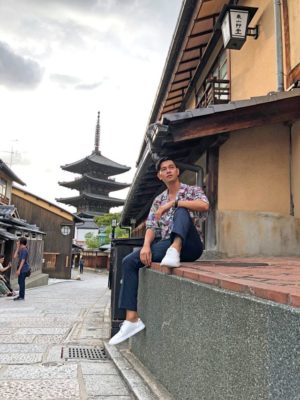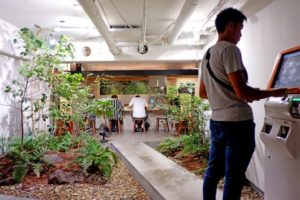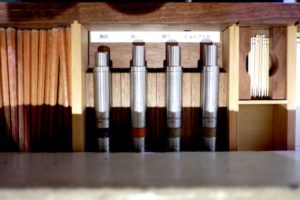RAMEN is probably the Japanese dish most of us Filipinos know of.
Whenever I visit a new city in Japan, I never fail to taste its version of the ramen.
In Kyoto, traditional ramen is made with soy sauce-based broth and features straight noodles in a thick heavy soup.
Since I’ve had traditional ramen from my previous visits, I decided to be somewhat adventurous and check out two modern, new wave ramen houses in downtown Kyoto.
There was a typhoon moving towards Kyoto during the first day of my recent visit.
While it was predicted to hit the city late at night, there was already a downpour in the afternoon.
The weather certainly called for a warm spicy big bowl of ramen.
The original plan was to eat at the “No Name Ramen” but it was closed that night due to the approaching storm.
Disappointed and hungry, I dropped by a convenience store to pick up some munchies and water; and enroute to the bus stop, I luckily spotted an open restaurant.
The menu said: “Here we introduce another face of Kyoto cuisine—the Kyoto Hotness—Kyo-Kara Ramen!” Totally fits the bill of what I was
craving for that night!
The Kyo-Kara Ramen menu instructed me to do a three-step custom-your-ramen to order.
The broth is made with Konnyaku noodles and sweet soy sauce from Kyushu, broth topped with egg, leek, garlic, minced meat and the secret original blend of spices.
I ordered the mega-size Kyo-Kara Ramen with Konnyaku noodle and at spicy level 5 .
You can choose the chili hotness level from zero to the maximum 25.
A spoonful sip of Kyo-Kara Ramen gave an initial hint of lightly sweet soy, creamy smooth textured broth which progressed to a sharp chili bite that lingered for a minute.
Now that’s a bold version of Kyoto ramen indeed!
On my second night, I was finally able to try the so-called nameless ramen.
The “No Name Ramen” place interestingly, and ironically for being unnamed, made a name for itself in Kyoto for its outright good quality ramen.
I was dining with my Japanese friend who lived in Kyoto for sometime and he mentioned that this place, like many other good ramen spots, has waiting time that can stretch to over an hour or two during meal times.
Timing our visit, we went right after peak hours, and had to wait only 15 minutes to be seated.
The place looked more like a posh café than a ramen shop, with club music playing but, thankfully, not crassly loud.
And hey, the ticket machine is touch screen! Most ramen places have the big, many-buttoned ordering machines, but this restaurant has a touch screen apparatus.
I ordered the layered-soup Charsu Ramen, which I absolutely loved.
The broth tasted like it’s made from a combination of fish and chicken broth, and ends with a note of tangy lemon.
The charsu was flavorful and the smoky hint mixes well with the soup, too.
Very interesting!
From the modern Osaka attractions to Kyoto’s old cultural charm, these two destinations are a favorite pair when visiting Southern-central Japan.
Osaka and Kyoto may have contrasting charisma, but when it comes to food—both offer a delectable spread that will not disappoint.
And if you get extra days in the Kansai region, Kobe is just waiting to be explored as well.





